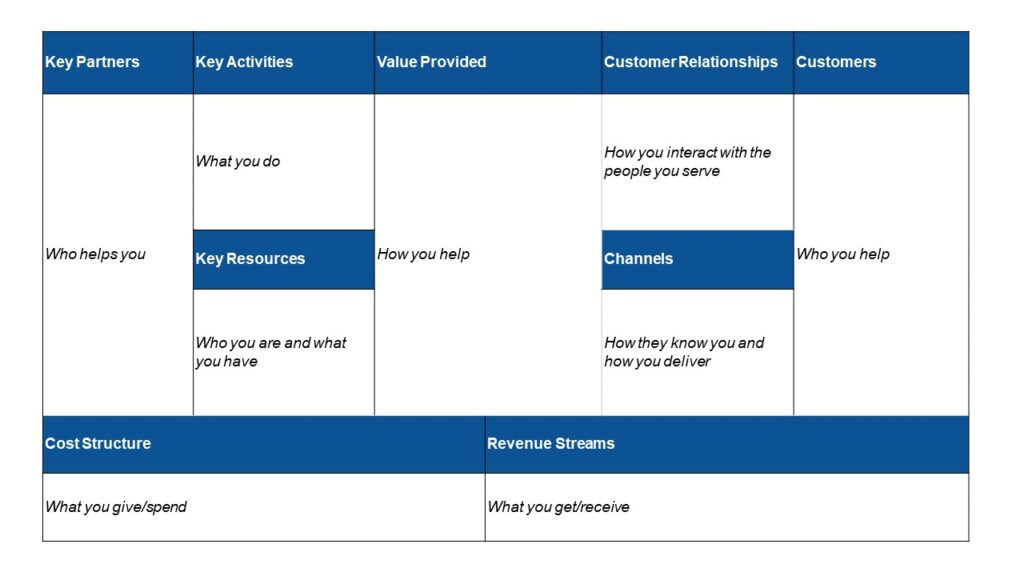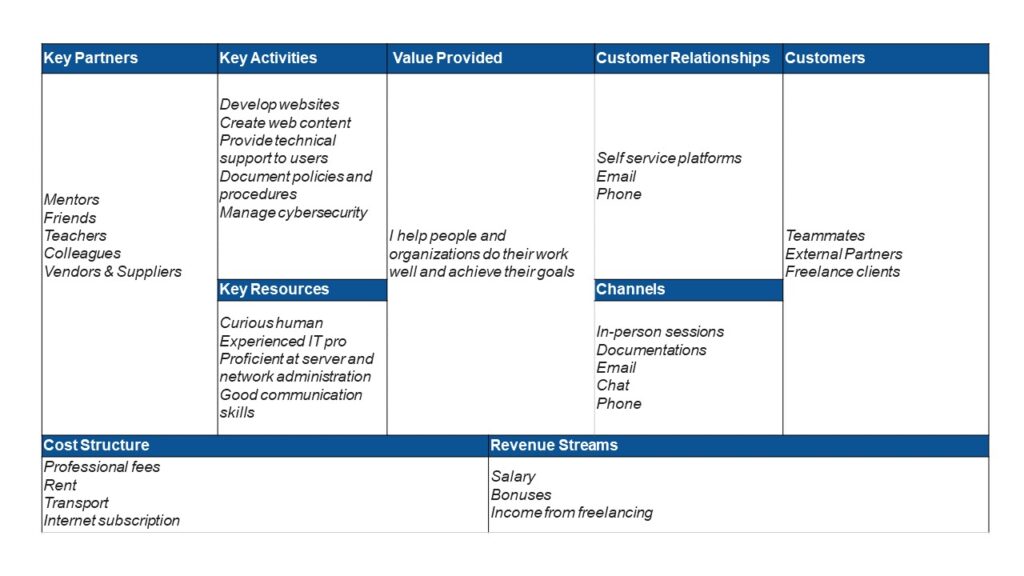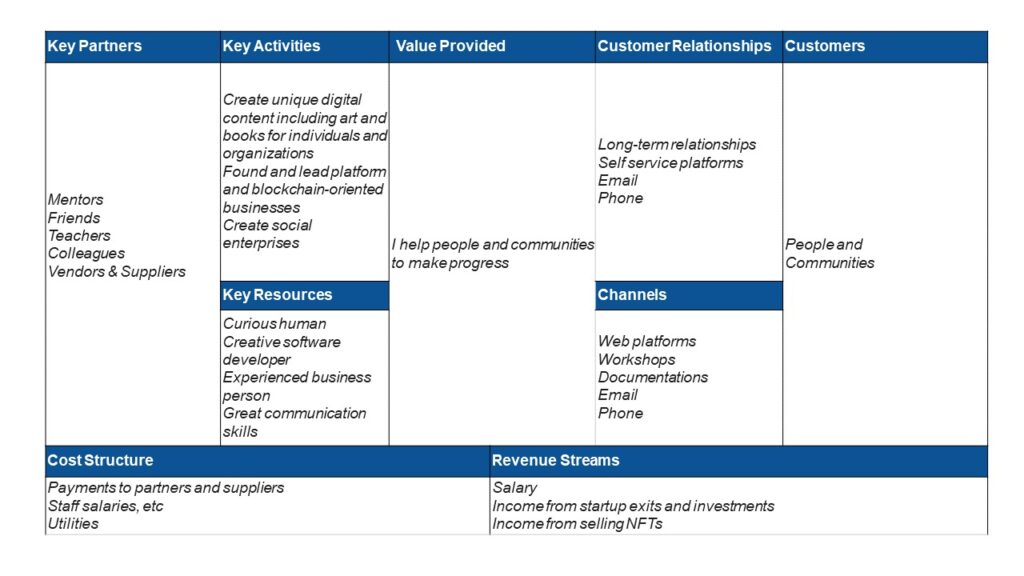Are you looking to discover new opportunities in life and career? If you haven’t had the chance to do so, taking the time to do some structured reflection is a great way to start off the year.
While many tools can help you do this, creating your personal business model using the Business Model Canvas (BMC) is a great way to discover new opportunities in your life and career.
For those familiar with it, the BMC is a simple yet powerful tool used by businesses to discover optimal ways to create and deliver value to the customers they identify. Originally created by Alexander Osterwalder, this tool evolved to help individuals create a personal business model to define their purpose and values, inventory their skills and competencies, and chart a path for growth. You might want to check out the book Business Model You by Tim Clark in collaboration with Osterwalder and Yves Pigneur.
Here is a version of the Personal Business Model Canvas:

Analyzing the Personal Business Model Canvas
The BMC is based on a canvas divided into nine blocks: Key Partners, Key Activities, Key Resources, Value Proposition, Customer Relationships, Customer Segment, Channels, Cost Structure, and Revenue Streams. Its power comes from the opportunity to create a concise model on one page thereby making it easier to make connections between the various elements. The following highlights each block of the personalized Business Model Canvas:
- Key Partners: Who are your key collaborators, suppliers, vendors within and outside your organization? Who will help you?
- Key Activities: What do you do? What are the most important, significant activities you do? Taking stock of these will also help you see which ones you should prioritize or at least begin to reflect on the ones to prioritize, reduce or abandon for the sake of focus.
- Key Resources: What are your key resources? Include tangible and intangible assets such as certifications, investments, knowledge, certifications, soft skills, and so on.
- Value Proposition: What do you have to offer? What\’s your uniqueness? Why should anyone hire you or do business with you? Take stock of your skills, competencies, and abilities. Find the edge you have, create a short statement.
- Customer Relationships: How do you interact with your customers? Phone calls, email, chat? Virtual meetings, newsletters, blog posts, or articles? How will your customers reach you when they need you?
- Channels: Through what platforms do you work or serve your customers–people, groups, or organizations?
- Customer Segment: Who are the people you serve? You may be an employee but you need to know the people who benefit from your work directly and indirectly, for example, the people your work affects. If you are a business leader, founder, or freelancer, this becomes even clearer.
- Cost Structure: What are the most significant things you spend money on? Determining these will lead to reviewing how to manage or streamline your expenses efficiently. What do you give?
- Revenue Streams: How will you make money? Salary, commissions, wages, royalties, sales income? Determine the activities tied directly to generating income for you.
The Benefits of Creating Your Personal Business Model
- Creating your personal business model helps to pause to review your life’s progress
- It provides a concise status report and inventory of your life and career
- Your business model helps you to identify gaps between your current and ideal models of life and career
- It offers an opportunity to identify potential growth areas and the impetus to begin to live and work more intentionally based on your discoveries
How To Create Your Personal Business Model
You can create your personal business model today by taking this simple but powerful exercise using the BMC. Ultimately, the idea is to create two models, the first of your current status: your key partners, resources, activities, and so on. The second model will be your vision of the future, based on the identified gaps and growth areas, a model of your ideal life and career. Finally, you will enumerate the action steps you need to take to move from where you are to where you want to be.
These are the steps again:
- Create your current personal business model
- Create your future or ideal personal business model
- Identify the gaps or changes you want to make
- List the action steps you need to achieve your goal(s)
- Go for it!
Let’s see this personal BMC in action.
An Example of a Personal Business Model
Here is an example of a fictional character John’s personal business model:
A. John’s Current Personal Business Model:

B. John’s Ideal or Future Personal Business Model

Your Turn Now
What will you do next? Take the next steps to create your personal BMC. Start working on the elements you have identified. Be more intentional as you act regarding all various aspects.
For instance, our fictional professional will probably have some of these:
- Take software development courses
- Sign up for a business course
- Learn more about blockchain and non-fungible tokens (NFTs)
- Start a social enterprise
Are you curious to have a go at creating your own personal business model? We promise it will be an amusing exercise at the very least, but it might just jumpstart a revolution in the way you think about yourself and your career.
You may download and print the template or create yours. You may also visit the Business Model You website to download a copy (requires joining the online community). Record your responses in each block as you discover new opportunities for your life and career.
